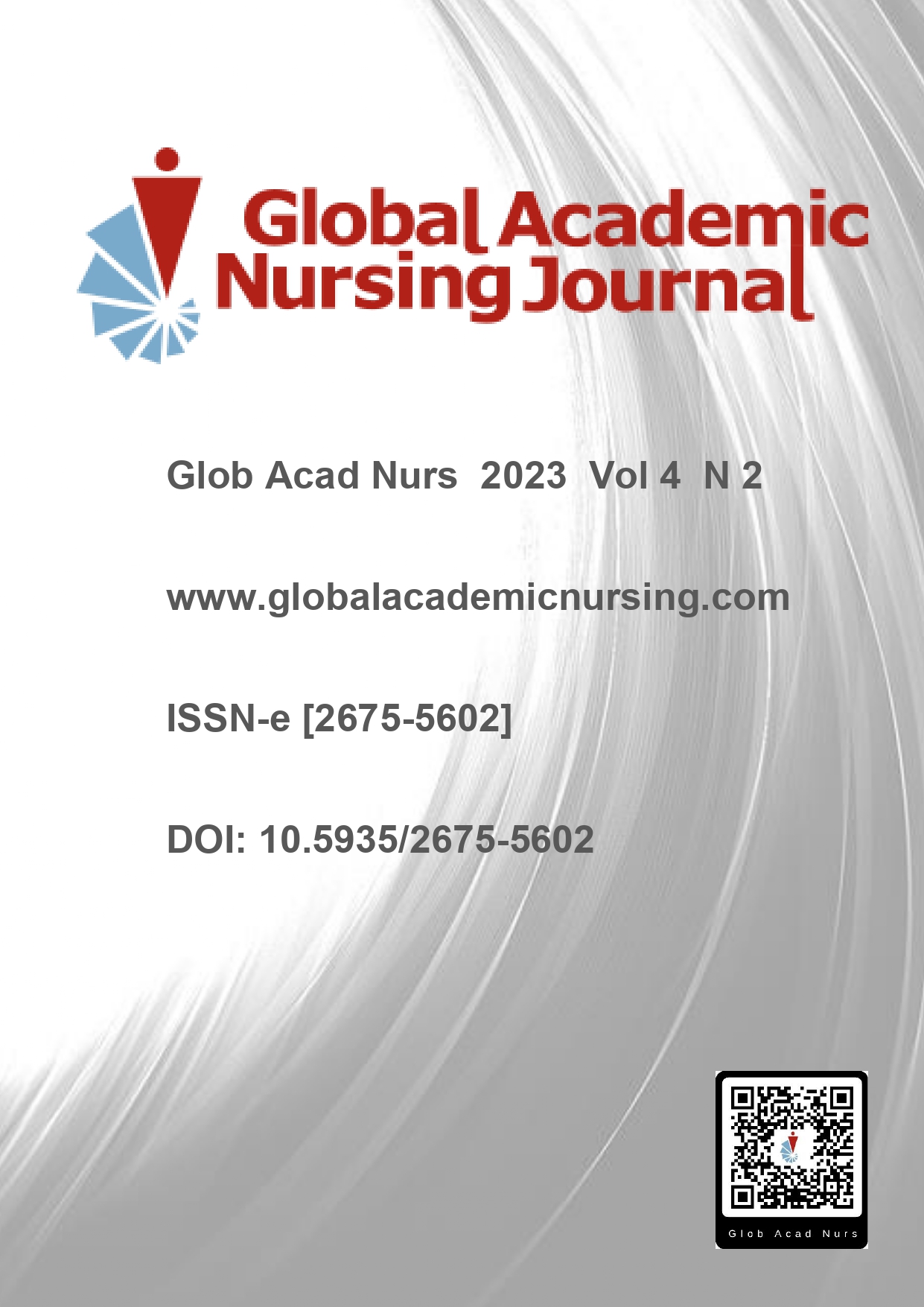Abstract
This work constructed and tested a medium-fidelity clinical simulation scenario to apply the multidimensional assessment of the elderly (AMPI) by nursing students. To assess competencies, a student satisfaction questionnaire was used and AMPI was applied as an instrument to assess the health conditions of elderly people. The simulation included 16 students from the 5th semester of the Nursing Course, divided into 3 students in attendance and 13 students in the anteroom during the simulation. After the scenario ended, the students were gathered in the anteroom to carry out the debriefing with the teaching facilitators. The students carefully discussed the care provided, connecting a nurse's practice of care and application of AMPI with the theoretical context of primary health care. Knowledge was assessed during the service, using a skills and abilities assessment instrument. The simulated scenario proved to be a health technology tool of great relevance in teaching nursing in public health, and the preparation must be largely planned so that time is sufficient, and the learning objectives are covered. The simulation allowed students to connect with light technologies and the standardized patient, favoring cognitive, metacognitive, motivational and affective processes.
References
Rantz MJ, Phillips L, Aud M, et al. Evaluation of aging in place model with home care services and registered nurse care coordination in senior housing. Nurs Outlook. 2011;59:37e46. doi: 10.1016/j.outlook.2010.08.004
Guhde J. Nursing students’ perceptions of the effect on critical thinking assessment, and learner satisfaction in simple versus complex high-fidelity simulation scenarios. J Nurs Educ. 2011;50:73e78. doi: 10.3928/01484834-20101130-03
Rodeschini G. Gerotechnology: a new kind of care for aging? An analysis of the relationship between older people and technology. Nurs Health Sci. 2011;13:521e528. doi: 10.1111/j.1442-2018.2011.00634.x
Fogg N, Kubin L, Wilson CE, Trinka M. Using virtual simulation to develop clinical judgment in undergraduate nursing students. Clinic Simul Nurs. 2020;48:55-58. doi: 10.1016/j.ecns.2020.08.010
Smith SJ, Barry DG. An innovative approach to preparing nursing students for care of the elderly in the home. Geriatr Nurs. 2013;34(1):30-34. doi: 10.1016/j.gerinurse.2012.07.001
Ma J, Lee Y, Kang J. Standardized patient simulation for more effective undergraduate nursing education: a systematic review and meta-analysis. Clinic Simul Nurs. 2023;74:19-37. https://doi.org/10.1016/j.ecns.2022.10.002
La Cerra C, Dante A, Caponnetto V, Franconi I, Gaxhja E, Petrucci C, Lancia L. Effects of high-fidelity simulation based on life-threatening clinical condition scenarios on learning outcomes of undergraduate and postgraduate nursing students: A systematic review and meta-analysis. BMJ Open 2019;9(2):e025306. doi: 10.1136/bmjopen-2018-025306
McGaghie WC, Issenberg SB, Petrusa ER, Scalese RJ. A critical review of simulation-based medical education research: 2003-2009. Med Educ. 2010;44(1):50-63. doi: 10.1111/j.1365-2923.2009.03547.x
Joo GE, Sohng KY, Kim HJ. Effects of a standardized patient simulation program for nursing students on nursing competence, communication skill, self-efficacy and critical thinking ability for blood transfusion. J. Korean Acad. Fundam. Nursing. 2015;22(1): 49-58. doi: 10.7739/jkafn.2015.22.1.49
Lee HJ. Effects of convergence-based simulation education on the problem-solving ability, self-efficacy and performance confidence of core fundamental nursing skill for nursing students. J. Converg. Inform. Technol. 2020;10(1):44-50. doi: 10.22156/CS4SMB.2020.10.01.044
Issenberg SB, McGaghie WC, Petrusa ER, Gordon DL, Scalese RJ. Features and uses of high-fidelity medical simulations that lead to effective learning: a BEME systematic review. Med Teach. 2005;27(1):10-28. doi: 10.1080/01421590500046924
Kang GS, Ki Y. Development and application of integrated-simulation practice program using standardized patients: Caring for alcoholism with diabetes mellitus in the community. J Korean Academ Ind Cooper Soc. 2016;17(8):662-672. doi: 10.5762/KAIS.2016.17.8.662
Schram AP, Mudd S. Implementing standardized patients within simulation in a nurse practitioner program. Clinic Simul Nurs. 2015;11(4):208-213. doi: 10.1016/j.ecns.2015.02.002
Ha EH. Experience of nursing students with standardized patients in simulation-based learning: Q-method study. Nurse Educ. Today. 2018;66:123-129. doi: 10.1016/j.nedt.2018.04.023
Oh PJ, Jeon KD, Koh MS. The effects of simulation-based learning using standardized patients in nursing students: A meta-analysis. Nurse Educ Today. 2015;35(5):e6-e15. doi: 10.1016/j.nedt.2015.01.019
Kim JH, Park IH, Shin S. Systematic review of Korean studies on simulation within nursing education. J Korean Acad Soc Nurs Educ. 2013;19(3):307-319. doi: 10.5977/jkasne.2013.19.3.307
de Oliveira CM, Marques VF, Schreck RSC. Aplicação de metodologia ativa no processo de ensino-aprendizagem: relato de experiência. Rev. Eletron. Pesquiseduca [Internet]. 2017 [acesso em 21 nov 2022];9(19):674-684. Disponível em: https://www.prefeitura.sp.gov.br/cidade/secretarias/upload/saude/MANUAL_AMPI_AB_ATUALIZAO_2021
Scalabrini Neto A, Fonseca AS, Brandão CFS. Simulação realística e habilidades na saúde. São Paulo: Atheneu; 2020.
Oliveira NA, Fernandes FSL, Siqueira LD, Okuno MFP, Miura CRM. O uso do cenário clínico realístico do ensino da enfermagem em urgência e emergência. Glob Acad Nurs. 2022;3(5):e335. https://doi.org/10.5935/2675-5602.20200335
Santana ER, Piacezzi LHV, Lopes MCB, Batista REA, Vancini-Campanharo CR, Góis AFTD. Construção e validação de cenário de simulação de transporte intra-hospitalar. Einstein. 2021;19:1-9. doi: 10.31744/einstein_journal/2021AO5868
Lioce L, Lopreiato J, Downing D, Chang TP, Robertson JM, Anderson M, Spain AE, The Terminology and Concepts Working Group. Healthcare Simulation Dictionary - second edition, 2020. Agency for Healthcare Research and Quality. doi: 10.23970/simulationv2
Cowperthwait A. NLN/Jeffries simulation framework for simulated participant methodology. Clinic Simul Nurs. 2020;42:12-21. doi: 10.1016/j.ecns.2019.12.009
Lavoie P, Cossette S, Pepin J. Testing nursing students’ clinical judgment in a patient deterioration simulation scenario: Development of a situation awareness instrument. Nurse Educ Today 2016;38:61. doi: 10.1016/j.nedt.2015.12.015
Rutherford-Hemming T, Alfes CM, Breymier TL. A systematic review of the use of standardized patients as a simulation modality in nursing education. Nurs Educ Perspect. 2019;40(2):84-90. doi: 10.1097/01.NEP.0000000000000401
Byrne D, Overbaugh K, Czekanski K, Wilby M, Blumenfeld S, Laske RA. Assessing undergraduate nursing students’ attitudes toward the dying in an end-of-life simulation using an ACE.S unfolding case study. J Hosp Palliat Nurs. 2020;22(2):123-129. doi: 10.1097/NJH.0000000000000626

This work is licensed under a Creative Commons Attribution-NonCommercial-NoDerivatives 4.0 International License.
Copyright (c) 2023 Global Academic Nursing Journal

